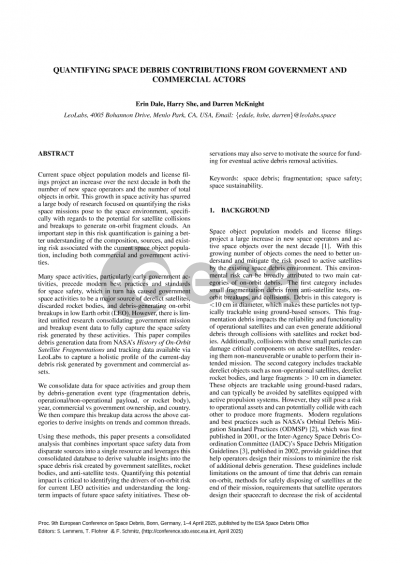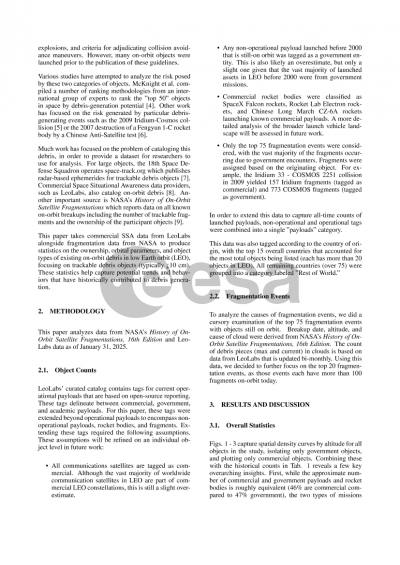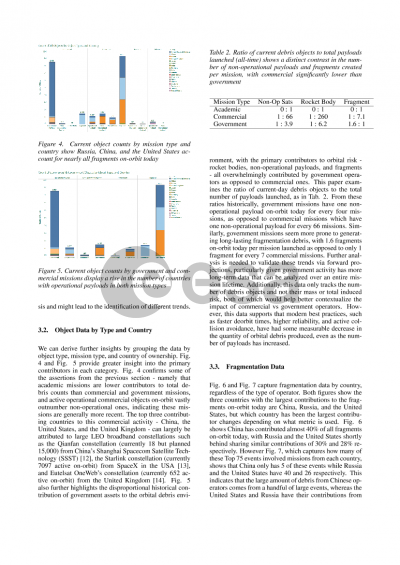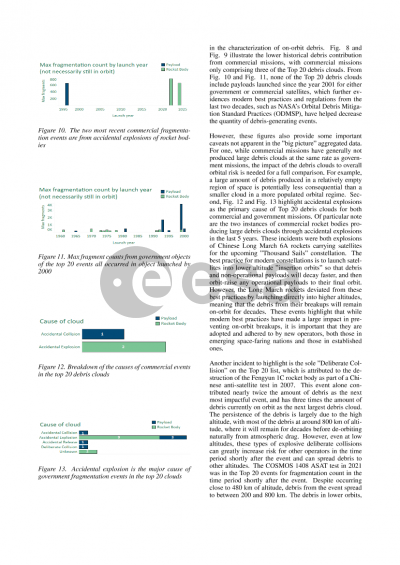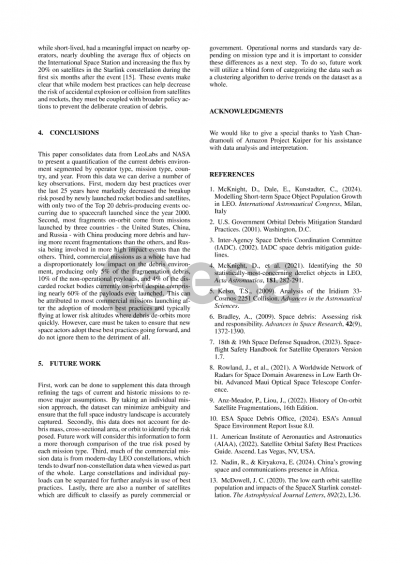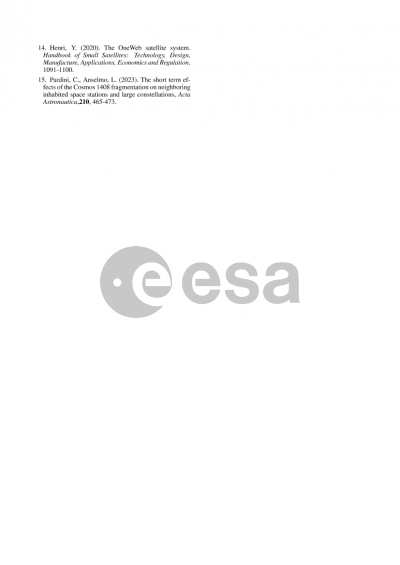Document details
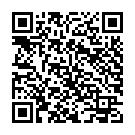
Abstract
Current space object population models and license filings project an increase over the next decade in both the number of new space operators and the number of total objects in orbit. This growth in space activity has spurred a large body of research focused on quantifying the risks that space missions pose to the space environment, specifically with regards to the potential for satellite collisions and breakups that might generate on-orbit fragment clouds. An important step in this risk quantification is gaining a better understanding of the makeup, sources, and existing risk associated with the current space object population, including both commercial and government activities.
Many government activities in space precede modern best practices and standards for space safety, which in turn has caused government space activities to be a major source of derelict satellites, discarded rocket bodies, and debris-generating on-orbit breakups in LEO. However, there is limited unified research that consolidates government mission and breakup event data to fully capture the space safety risk generated by these activities. This paper compiles debris generation data from NASA’s History of On-Orbit Fragmentations and tracking data available via LeoLabs and the 18th Space Defense Squadron to capture a holistic profile of the risk generated by government assets both in terms of small debris generation potential and large object collision risk.
To analyze small debris generation potential, we consolidate breakup fragment data for government activities and group them by debris-generation event type, year, commercial vs government ownership, and country. We then compare this breakup data across the above categories to derive insights on trends and common threads. We follow a similar procedure for quantifying the risk of collision from large, abandoned government objects. We group these objects by ownership and type (fragmentation debris, operational/non-operational payload, or rocket body). For each object, we then compute a variety of debris risk metrics, including object-mass-years and total derelict objects generated in space. We use these metrics to estimate the total risk generated by historical government activities in-orbit and cross-compare the resultant risk against that of commercial activities.
Using these methods, this paper presents a consolidated analysis that combines important space safety data from disparate sources into a single resource and leverages this consolidated database to derive valuable insights into the space debris risk created by government satellites, rocket bodies, and anti-satellite tests. Quantifying this potential impact is critical to identifying the drivers of on-orbit risk for current LEO activities and understanding the long-term impacts of future space safety initiatives. These observations may also serve to motivate the source for funding for eventual active debris removal activities.
Preview
